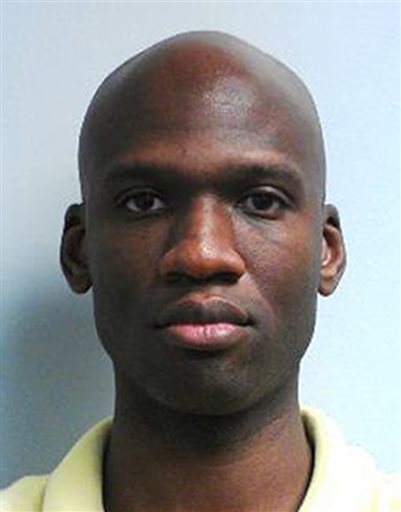How can I not write about what happened at the Navy Yard in Washington, D.C., this past week? Once again, a mentally troubled American picked up a gun and committed mass murder. A dozen died in the blink of an eye, murdered by a former Navy man, who had left a trail of clues about his volatile mental state.
Videos by Rare
If only we could figure out a way to collect and analyze these types of red-flag clues — displayed ahead of time. According to research, in more than 60 percent of mass-shooting cases, we might be able to stop massacres before they happen.
Navy officials say Aaron Alexis, 34, showed a “pattern of misbehavior” during his service. His conduct was disorderly, and he had been insubordinate, absent without leave after being tossed in jail following a 2008 bar fight in Georgia. He was investigated in 2010 in Texas for firing a gun into the celling of an apartment. In 2004, in Seattle, Alexis told police he shot out car tires in an “anger-fueled blackout.” In each case, he was not prosecuted for his anti-social behavior.
None of Alexis’ violations of Navy regulations or run-ins with the law caused the military to downgrade his honorable discharge. When he left the Navy Reserves in 2011, Alexis maintained his secret security-clearance status as he entered the world of independent military contractors. A division of Hewlett-Packard hired Alexis as a computer technician, probably impressed that he had already had security clearance. It meant Alexis had unfettered entry to just about every military base.
In retrospect, the carnage at the Navy Yard could have happened at any one of his job postings.
In the last month of his life, Alexis’ mental-health problems apparently escalated. On Aug. 7, he called police from a hotel room in Newport, R.I. He complained that people had followed him from an airport in Virginia. A police report reveals Alexis said he had, “heard voices speaking to him through the wall, flooring and ceiling.” He said he had been forced to go to three different hotels in one night to escape the people who were “sending vibrations into his body,” by using “some sort of microwave machine.”
Newport police were so concerned with what they had heard that they alerted Navy police and immediately faxed over their report. Police say the on-duty Navy officer promised to check out whether Alexis really was a contractor.
The episode was a pretty big red flag, I’d say, but, apparently, the information was not recognized as being the behavior of a man teetering on the brink of reality.
Two weeks later, Alexis turned up at the VA hospital in Providence, R.I., suffering from sleep deprivation and asked for help with his chronic insomnia. He got a prescription for the anti-depressant Trazodone.
And then his independent contracting firm sent Alexis to Washington, D.C., to work a job at the Navy Yard. He went to the VA hospital in D.C. on Aug. 28, again complaining that he couldn’t sleep. His prescription was renewed.
Medical records are, of course, private so Alexis’ employer and the military bases where he was assigned likely had no idea they were dealing with a man who suffered torturous, sleepless nights and had delusions that mysterious strangers were zapping him with microwave signals.
As after every mass shooting, there have been the predictable calls for more gun-control laws, but I’m here to tell you that won’t work. Common sense tells us that people planning mass murder don’t pay attention to the law. Alexis certainly didn’t follow D.C.’s toughest-in-the-nation gun laws. He went right next door to Virginia and bought himself a rifle — legally — and transported it — illegally — into D.C., where civilians are not allowed to carry weapons. We’ve been passing more gun laws for decades now and the carnage hasn’t stopped, has it?
What we have not been concentrating on is paying attention to the red flags so many of these killers send out. We dislike categorizing even the most disturbed people as “potentially dangerous.” We loathe the idea of opening up medical records to quietly keep track of the unstable. We closed up mental-health facilities years ago, fearing they were somehow inhumane. Today, as the facts show us how foolish we were, we are now too broke to even consider building institutions to help the mentally disturbed.
The man who murdered 12 and wounded 58 in a movie theater in Colorado last year had been seeing a psychiatrist who likely realized — before his deadly attack — that she was dealing with a person with significant mental issues. He had even prepared a notebook for the doctor outlining his planned crime, but she failed to see it in time.
The parents of the man who killed six and wounded 13 others, including Congresswoman Gabrielle Giffords, in Tucson, Ariz., had been desperately trying to get their son some psychiatric help in the months before his killing spree. When they couldn’t find a program to take him, they disabled his car so he couldn’t leave the house. And the mother of the young man who killed nearly 30 children and adults at Newtown Elementary School was overwhelmed trying to raise a mentally disabled son alone. Nancy Lanza knew her son had major mental problems and was working to find him a special school.
My best guess? Nothing much is going to change. With an estimated 310 million non-military guns available in America today, it would be impossible to scoop them all up. And why should we? The vast majority of civilian gun owners are completely responsible. Until we learn to identify and control the irresponsible person holding a gun, we better steel ourselves. The next massacre is just around the corner.
© CREATORS.COM



